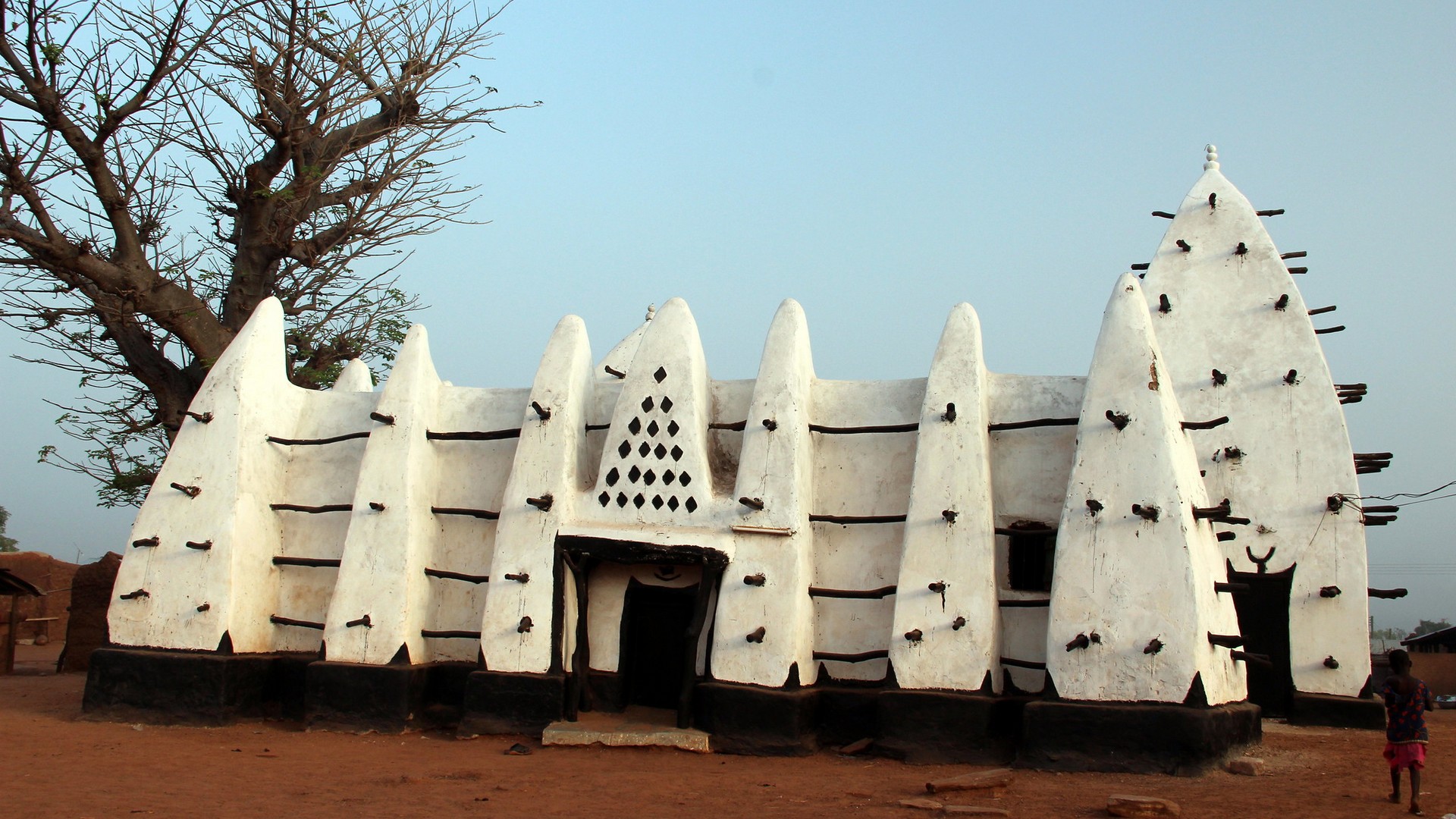Description
Property Name: Larabanga Friday Mosque
Inventory No: 223-1-1
Date of infill of the inventory form: 2008-02-14
Country (State party): Ghana
Province: Larabanga
Town:
Geographic coordinates: 9° 12′ 35.94″ N
1° 51′ 20.02″ W
Historic Period: 1421
Year of Construction: 17th-19th centuries
Style: Dyula
Original Use: Mosque
Current Use: Mosque
Architect: Unknown
Significance
The building is the holiest mosque in Ghana and contains an old Quran. It is a good example of the mud brick mosques of the region. Having a rectangle plan, the mosque has heavily pinnacled buttresses and square pyramidal towers with projecting beams. It is believed that it is reconstructed in the 19th century.
Selection Criteria
vi. to be directly or tangibly associated with events or living traditions, with ideas, or with beliefs, with artistic and literary works of outstanding universal significance
State of Preservation
The Larabanga Mosque originally founded in 1421, it has undergone restoration several times since. The World Monuments Fund lists it as one of the 100 Most Endangered Sites. The restoration works have revived the knowledge of mud-plaster maintenance. Owing to the environmental effects on the walls, the mosque has needed several renovations and restoration work which over the years have altered some of its exterior designs. In September 2002, a severe storm destroyed the mihrab and the minaret. The Ghana Museums and Monuments Board decided to restore the mosque. The conservation process involved the removal of the earlier cement plaster from the surfaces of the mosque, the wooden structural components were replaced, the minaret and the mihrab were reconstructed, the portal was redone, and the interior and exterior surfaces were plastered in the traditional way.
References
Michell, George. ed. 1978. Architecture of the Islamic World; Its History and Social Meaning. London: Thanes & Hudson.


